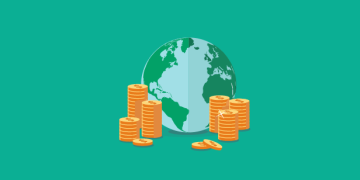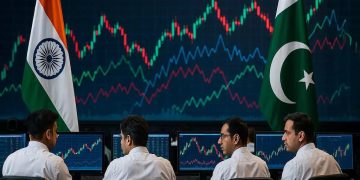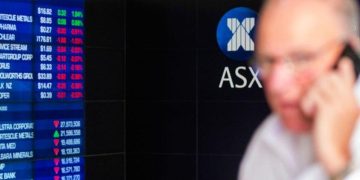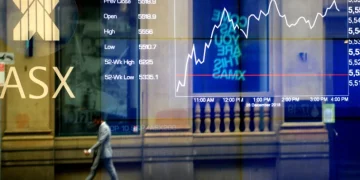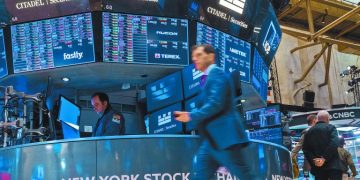Shifting Currents: How Trade Realignments Are Rewriting the Global Map
1. A World in Rearrangement
The global trading system — once the engine of globalization and prosperity — is being quietly rewritten.
For decades, trade was a story of integration: borders opening, supply chains expanding, and capital flowing to where it was most efficient. But the mid-2020s mark a profound shift. Today, efficiency is giving way to resilience, globalization to regionalization, and openness to security.
From Washington to Beijing, Brussels to Jakarta, trade policy is no longer about maximizing growth; it’s about minimizing vulnerability. The forces driving this shift — geopolitics, technology, and climate — are redrawing the map of global commerce, fragmenting old alliances, and creating new corridors of exchange.
According to the World Trade Organization (WTO), global merchandise trade volume rose just 3.8% in 2025, down from the post-pandemic surge of 6% in 2023. Yet beneath that slowdown lies a deeper transformation: not less trade, but different trade. The rules, partners, and motivations are evolving in ways unseen since the early 1990s.
2. The End of Hyper-Globalization
To understand the present, it helps to recall the golden era of globalization.
Between 1990 and 2010, world trade as a share of global GDP jumped from 38% to nearly 61%.
Container shipping, low-cost manufacturing, and the rise of China as the “world’s factory” created an interconnected economic web that lifted over a billion people out of poverty.
But that era is over.
Three shocks accelerated its end:
- The COVID-19 pandemic, which exposed fragile supply chains;
- The Ukraine war, which politicized energy and food trade;
- And the U.S.–China rivalry, which reframed commerce as a matter of national security.
As a result, global firms no longer treat the world as a single integrated market. They are learning to operate in what McKinsey Global Institute calls a “multi-polar trading world” — one divided by regulation, ideology, and risk tolerance.
The 2020s, then, are not about deglobalization per se, but de-risked globalization — slower, more regional, and more political.
3. Trade Fragmentation: The Numbers Behind the Trend
The data tell a story of gradual fragmentation:
- Cross-border investment between countries with geopolitical alignment (e.g., U.S.–EU, China–ASEAN) has remained strong, but FDI flows between rival blocs have fallen nearly 30% since 2018, according to IMF analysis.
- Technology trade — especially semiconductors, advanced machinery, and AI components — is now subject to export controls and licensing regimes.
- Supply chain diversification is accelerating: nearly 60% of multinational firms surveyed by Deloitte in 2025 said they had shifted some production out of China, primarily to Vietnam, India, and Mexico.
Yet overall global trade has not collapsed. Instead, it’s being rechanneled — redirected through new regional networks that reflect not comparative advantage, but strategic alignment.
4. The Rise of “Friendly Trade”
Enter the age of “friendshoring.”
Coined by U.S. Treasury Secretary Janet Yellen, the term refers to sourcing goods and services from countries deemed politically reliable.
It is a subtle but powerful reordering principle: geopolitics now determines trade routes.
The United States, for example, has deepened supply chain ties with Mexico, Vietnam, and India. U.S. imports from Mexico have surged 27% since 2022, overtaking China as America’s largest trading partner in early 2025.
Meanwhile, Europe has ramped up trade with Morocco, Turkey, and Eastern Europe, seeking to reduce dependence on Chinese manufacturing and Russian energy.
For Asia, this shift represents both challenge and opportunity.
China’s role as a manufacturing hub remains dominant — it still accounts for roughly 28% of global manufacturing output — but its position is no longer unassailable.
Vietnam’s exports have grown by double digits annually, while India’s manufacturing output jumped 8.5% in 2024, supported by tax incentives and infrastructure investments.
“Friendshoring doesn’t eliminate China,” says Deborah Elms, an economist at the Asian Trade Centre, “but it forces China to become one node in a network, not the center of it.”
5. The Return of Industrial Policy
One of the most striking features of this new trade order is the revival of industrial policy — long dismissed by free-market economists, now embraced across the political spectrum.
The U.S. Inflation Reduction Act (IRA), passed in 2022, has already unleashed more than $500 billion in clean energy and manufacturing subsidies.
Europe has responded with its Green Deal Industrial Plan, seeking to match American incentives and keep industries within the bloc.
China, for its part, has doubled down on its own state-led strategy, investing heavily in EVs, batteries, and solar technologies to maintain export dominance.
These policies mark a clear departure from the laissez-faire ethos that guided the WTO era.
Trade is no longer about efficiency, but about strategic autonomy.
Governments want supply chains that are local enough to be secure, but global enough to be profitable — a delicate, often contradictory balance.

6. The Technology Cold War
No discussion of trade realignment is complete without addressing the tech sector — the new frontline of global competition.
The U.S. has imposed sweeping restrictions on semiconductor exports to China, cutting off access to advanced chips used in AI, quantum computing, and defense systems.
The Netherlands and Japan have joined the effort, limiting sales of lithography equipment critical to chip fabrication.
China, in response, has banned exports of certain rare earth minerals and tightened control over gallium and germanium — key inputs for chip production.
The effect is a bifurcation of the global tech supply chain.
One ecosystem, centered around the U.S., South Korea, and Taiwan, focuses on high-end innovation.
The other, anchored in China, emphasizes mass production and cost competitiveness.
Both are racing to build self-sufficiency — a process that is costly, redundant, and geopolitically charged.
As economist Richard Baldwin notes, “Globalization is not dying, but it’s splitting — into parallel systems that will increasingly mirror, not merge.”
7. Energy, Resources, and the Green Trade Revolution
The green transition is creating a new trade geography around minerals, batteries, and clean technologies.
Countries rich in critical resources — lithium, nickel, cobalt — have become strategic prizes.
- Chile, Indonesia, and Australia are emerging as key suppliers in the global battery supply chain.
- The Middle East is leveraging its energy wealth to invest in hydrogen and solar exports.
- Africa, long marginalized in global trade, now finds itself central to the clean energy revolution.
In 2025, the global trade in green goods (EVs, wind turbines, solar panels, batteries) exceeded $2 trillion, up 30% from 2023.
Yet this boom also risks new dependencies: Europe’s solar supply chain still depends on Chinese polysilicon, and the U.S. remains reliant on foreign lithium refining.
The new trade race, it seems, is not only about where goods are made — but who controls the inputs that make them possible.
8. The South Rises: Emerging Economies Recast Trade Flows
One of the quiet revolutions of the 2020s is the rise of the Global South as both producer and consumer.
According to the UNCTAD 2025 Trade Report, trade between developing countries — “South-South trade” — now accounts for nearly 30% of global exports, up from 18% a decade ago.
ASEAN, India, and parts of Africa are becoming new hubs of demand and innovation.
Singapore and Malaysia have built advanced semiconductor clusters.
Kenya and Nigeria are exporting digital services and fintech products.
India, with its expanding middle class, has become a major market in its own right — not merely a manufacturing platform.
This diversification is reshaping the very logic of globalization.
Instead of a single global center feeding many peripheries, we now have multiple interconnected poles of trade.
The result: greater complexity, but also greater resilience.
9. The New Geography of Risk
Yet for all its dynamism, the emerging trade landscape is fraught with uncertainty.
Political risk has become the new tariff.
Supply chain security, sanctions, and export controls now dictate investment flows as much as cost or quality.
For businesses, the implications are profound.
Manufacturers must design supply chains that can “re-route” around conflict zones or regulatory barriers.
Financial institutions must navigate compliance across diverging regimes.
Even shipping companies — the lifeblood of trade — are adapting to new maritime realities, from Red Sea tensions to Arctic route openings.
According to Standard Chartered’s 2025 Global Trade Survey, 71% of multinational firms now factor geopolitical risk into their procurement strategy — up from just 27% in 2019.
Trade is no longer a purely economic decision; it is a strategic calculus.
10. What Comes Next: The Search for a New Order
The future of global trade will likely not be defined by collapse, but by controlled fragmentation — a world of regional blocs that still trade, but on their own terms.
Three major trade constellations are already visible:
- The Western Bloc, centered on the U.S., EU, and allies, emphasizing rules-based, democratic supply chains.
- The Asian Network, anchored by China and RCEP, focusing on cost-efficient production and intra-Asian integration.
- The Emerging South, fluid and opportunistic, balancing between both sides to extract maximum advantage.
The WTO, once the arbiter of global trade rules, struggles to stay relevant in this multi-speed reality.
Yet new frameworks — digital trade agreements, carbon border adjustments, AI governance pacts — are beginning to fill the vacuum.
The question is not whether globalization will survive, but what form it will take.
11. The Human Face of Trade Realignment
Behind every macroeconomic chart lies a human story.
From textile workers in Vietnam to semiconductor engineers in Arizona, millions are living through the ripple effects of shifting trade patterns.
New industries are rising, old ones fading.
Factory towns that once depended on exports to China are reinventing themselves as logistics or data hubs.
Skilled labor shortages are prompting new migration flows — from India to Europe, from Latin America to the U.S. South.
Trade, in its reconfigured form, continues to weave human destinies together — just in more intricate, less predictable ways.
12. The Age of Strategic Interdependence
The phrase that may best capture the spirit of 2025 is strategic interdependence.
Countries cannot afford complete decoupling — the economic cost would be immense — yet they also cannot return to naïve dependence.
Between these extremes lies a pragmatic middle path: cooperation where possible, autonomy where necessary.
Trade, then, becomes not a bridge of trust, but a calculated partnership.
It connects, but with caution.
It builds, but with boundaries.
It sustains, but on new terms.
As the currents of commerce shift, the world is learning a difficult but essential truth:
Globalization was never just an economic project. It was — and remains — a reflection of how nations choose to coexist.





